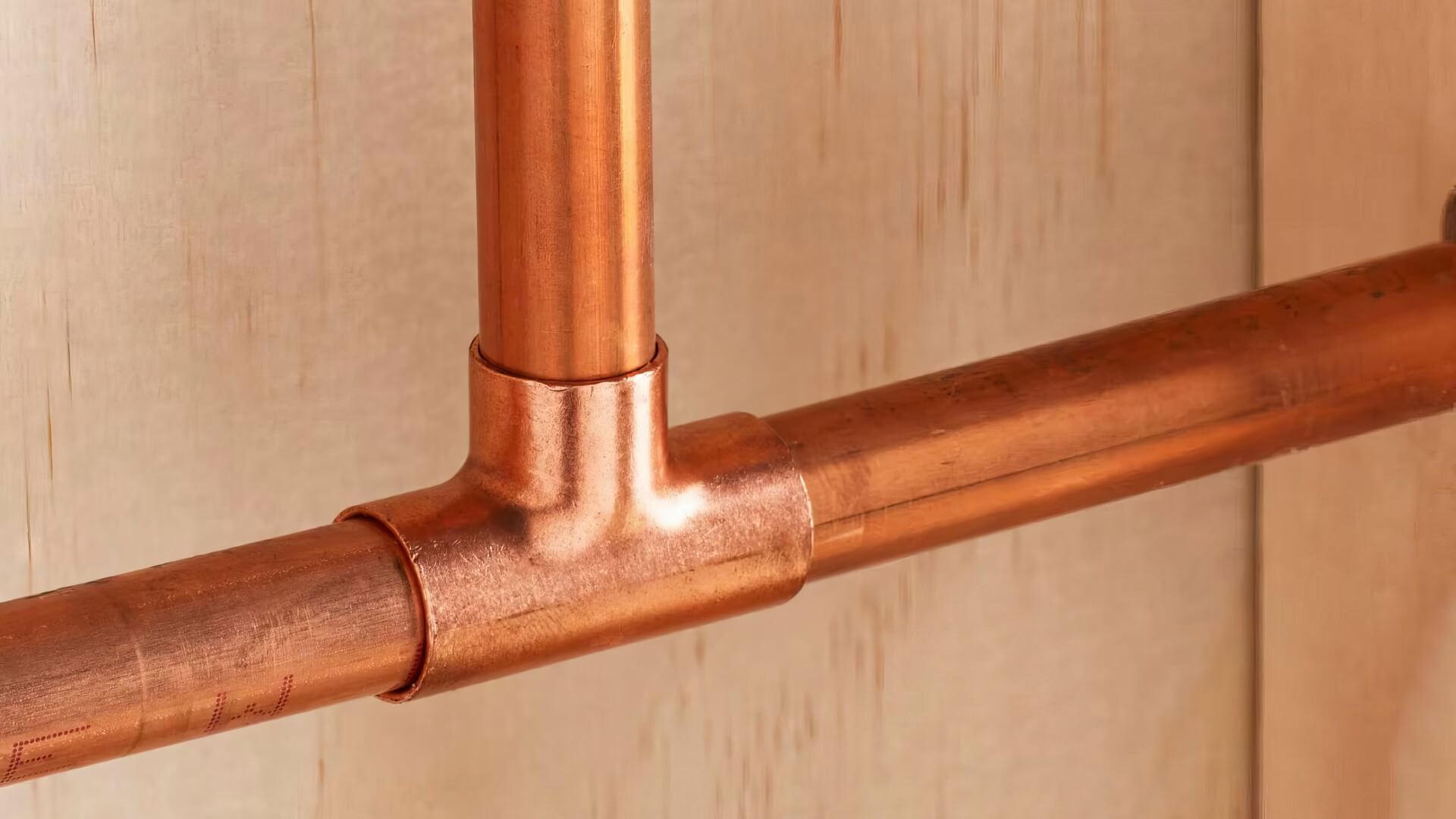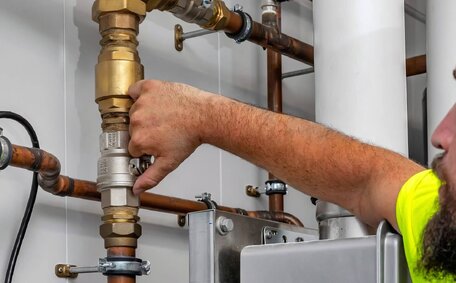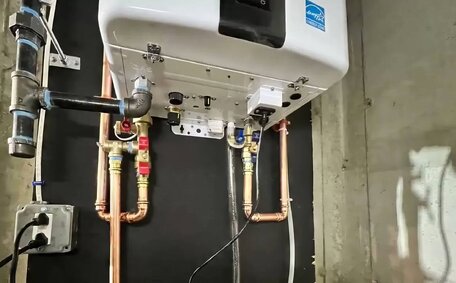Introduction to Hot Water Systems in Multi-Story Buildings
Choosing an appropriate hot water system is essential to guarantee a sufficient supply for all occupants in multi-story buildings. The high demand from multiple levels puts pressure on these systems to perform reliably. Important factors to consider when selecting your water heating options are:
- System size - Accurately assess and size your system to match anticipated hot water usage, resident numbers, and peak consumption times.
- Water pressure - If required, incorporate multiple pumps or booster systems to maintain a consistent water pressure and flow rate on higher floors.
- Energy efficiency - Modern pump hot water systems or solar hot water systems can be more efficient, yielding substantial savings over old gas storage units.
- Installation location - Centralised systems, including pump hot water system designs, on lower floors help minimise circulation losses versus individual units in each apartment.
Following relevant plumbing codes and regulations during system selection and installation is also essential. This guide outlines strategies to furnish multi-story buildings with a new hot water system that meets demand efficiently.
Compliance Requirements and Regulations
AS/NZS 5601.1 2013 Safety Regulations
The AS/NZS 5601.1 2013 standards provide safety guidelines for selecting, installing, and maintaining your gas hot water system. Essential requirements for multi-story buildings feature:
- Flameproof exhaust fans in plant rooms and hot water meter installations to prevent gas buildup and manage how your consumption is measured
- Seismic restraints to secure tanks and prevent water leaks/damage
- Correct gas pipe sizing for supply volumes and pressure drop
- Isolation valves for maintenance and emergencies
- Frost protection measures for roof installations
Water Efficiency Regulations
Depending on your state or territory, regulations such as WELS may require a minimum efficiency rating for your residence’s new hot water system. For example:
- NSW requires >3 star gas storage or >4 star heat pump systems in your home, when residing in new apartments
- Queensland mandates solar or heat pump hot water systems in every new house construction
- 5 star storage tanks or equivalent efficiency ratings typically expected
Plumbing Codes
Proper hot and cold water supply system conforming to AS/NZS 3500 Plumbing Code is critical, especially for recirculating ring mains. Key elements to consider for your system include:
- Dedicated recirculation risers to maintain loop temperatures
- Thermostatic tempering valves to prevent scalding
- Isolation and non-return valves for backflow prevention
- Pipe sizing and materials suitable for temperatures and pressures
Adhering to all applicable plumbing codes ensures safe, compliant operation of hot water systems in multi-story buildings.
Performance Factors to Consider
Several key factors influence the performance of a water heating system, particularly within multi-story buildings:
Distance to Fixtures
The further taps and fixtures are from the water heater, the greater the heat loss during delivery of hot water used throughout the building. Centralised systems sometimes face the challenge of supplying top floor apartments when two showers are used at the same time, struggling due to heat loss in piping from basement plant rooms. Decentralised systems ensure water heated closer to points of use, may offer greater efficiency.
Recirculation Loops
Properly designed recirculation loops can maintain consistent temperatures for multiple showers, enhancing comfort in tall buildings. Insulated ring mains mitigate heat loss, preserving system performance.
Water Pressure
Maintaining adequate flow where water at mains pressure levels from the water main across all floors poses a significant challenge. Multiple in-line pumps, break tanks, and pressure reducing valves may be necessary to provide suitable flow rates to upper apartments without dangerously high pressures at ground floor taps.
Control Strategies
Sophisticated control systems stage pump operation, vary recirculation flowrates, and optimise heater firing to match fluctuating hot water demands in large buildings. This maximises efficiency during off-peak periods.
Carefully evaluating these factors when planning systems for multi-story buildings allows plumbers to right-size equipment and design distribution networks that reliably meet peak demand without waste.
Ideal Placement and Location Considerations
Carefully considering hot water system placement is vital for functionality, regulatory compliance, and minimising waste water in multi-story buildings. Key location factors include:
Central vs Decentralised
Centralised hot water storage systems also, when located in basement plant rooms, reduce installation costs but can experience heat losses in piping to distant taps. Decentralised compact units located closer to your kitchen laundry appliances can improve efficiency but necessitate multiple units.
Gas Water Heater Requirements
- Cannot be installed in bedrooms or bathrooms
- Need an appropriate drainage system for Temperature Pressure Relief (TPR) valves
- Require ventilation meeting AS 5601; mechanical exhaust may be necessary
- Must sit on concrete base or safe tray
Electric Storage Tanks
Can be located in roof spaces or utility areas. Ensure:
- Reinforced flooring for heavy weights
- Accessibility for maintenance
- Overflow drainage trays to capture leaks
Carefully weighing spacing, ventilation, drainage, and access needs based on system types allows plumbers to safely install units in optimal locations.
Efficient Plumbing Strategies
Certain plumbing strategies are crucial for dramatically improving hot water system efficiency in multi-story buildings:
Manifold Systems
Manifold or “home-run” plumbing systems can ensure water can be distributed through a central manifold with dedicated supply lines running directly to each hot water unit. This minimises the water volume in pipes, reducing heat loss fromexcess pipework and long waits for hot water delivery.
Recirculation Pumps
In-line recirculation pumps keep water circulating through the system, maintaining even temperatures and prompt service.
Thermostatic Tempering Valves
Tempering valves combine hot water supply with cool mains water to ensure safe delivery temperatures, allowing heaters to operate efficiently at higher temperatures without scalding hazards.
By integrating these strategies, you can design a hot water system that delivers efficient and reliable service to all apartments in a multi-story building.
Choosing Suitable Systems for High Demand
Selecting the optimal hot water system for a multi-story building comes down to meeting the high demand reliably while maximising efficiency. Key options to evaluate include:
Gas Storage Tanks
Gas storage tanks are reliable for high demand situations and might align with your budget despite potentially higher initial costs. However, the impracticality of multiple large tanks can be circumvented with split systems near usage points, reducing heat loss.
Electric Heat Pump Systems
Your new modern heat pump water heaters, with integrated storage cylinders, combine higher energy efficiency with reduced greenhouse gas emissions, These systems, which operate best when positioned near usage points, employ optimised technology for heating water. Suitable models can serve multiple apartments, with select units boasting outputs exceeding 400 litres per hour. Installation is flexible, allowing for placement of units that pump water at an efficacious rate, measured per hour, regardless of how much space you have, with both indoor and outdoor models available.
Gas Instantaneous Water Heaters
Continuous flow water heating systems offer an endless supply, eliminating the standby losses associated with conventional storage tanks. However, in larger buildings, correspondingly extensive centralised units are necessary to fulfil the total demand.
Solar Pre-Heat Support
Solar pre-heating, used in tandem with central gas or pump water heaters, or continuous systems, can reduce energy demands for water heating by 15-25%. This provides partial load support during sunny daytime peak usage in communal multi-story developments.
Carefully work out the expected volume of water needs during peak demand and compare capabilities of various system types allows plumbers to right-size hot water supply infrastructure for larger multi-residential buildings.
Installation and Maintenance Guidelines
Proper installation and maintenance of water heating systems are vital for safe and dependable operation in multi-story buildings. Skilled plumbers should manage complex installations, taking into account your building’s hot water needs and vital components such as:
- System sizing and equipment - Size hot water tanks, pumps and pipework to meet modelled peak demand across all floors
- Water distribution design - Utilise efficient plumbing strategies like manifolds and recirculation loops
- Control systems - Stage pumps and optimise heater firing rates to improve efficiency
After installation, ensuring an adequate hot water supply through regular maintenance is crucial, including tasks like:
- Annual inspections - Check all components like valves, anodes, heating elements, pumps, hot water meter and ventilation
- Flushing tanks - Drain and flush out mineral buildup to maximise system lifespan
- Leak checks - Inspect pipe joints, valves, overflow trays and drainage for water leaks
- Performance testing - Confirm adequate temperatures and pressures across all apartment building units
Preventative maintenance can help prevent failures disrupting hot water supply to residents. With large centralised infrastructure, having contingency plans in place can be very helpful for same day rapid repairs or temporary supply.
Adhering to professional installation and maintenance practices ensures optimal safety, efficiency, and durability for hot water systems in multi-story buildings.
Energy Efficiency and Environmental Impact
Energy efficiency and minimising environmental impact are essential when selecting hot water systems for multi-story dwellings. Modern electric systems, including heat pump and solar-assisted options, notably enhance efficiency compared to traditional gas storage heaters.
Electric Heat Pumps
Heat pump water heaters, with a fan compressor feature, extract heat from the surrounding air or ground for efficient air and water heating. These systems can potentially halve the energy demands for electric hot water heating relative to traditional electric resistance tanks. Their high Coefficient of Performance (COP) ratings, often exceeding 3.0, underscores their energy efficiency.
Solar Pre-Heat Systems
Incorporating solar water heaters into central gas or electric storage tank systems can lower heating loads by 15-25%.
Improved Gas Technology
Modern condensing gas water heaters, despite being less efficient than electric counterparts, now achieve thermal efficiencies greater than 95%, marking a 25% improvement on traditional models.
Selecting efficient hot water systems for multi-story buildings entails careful energy rating assessment and consideration of operational costs that influence monthly energy bills.






